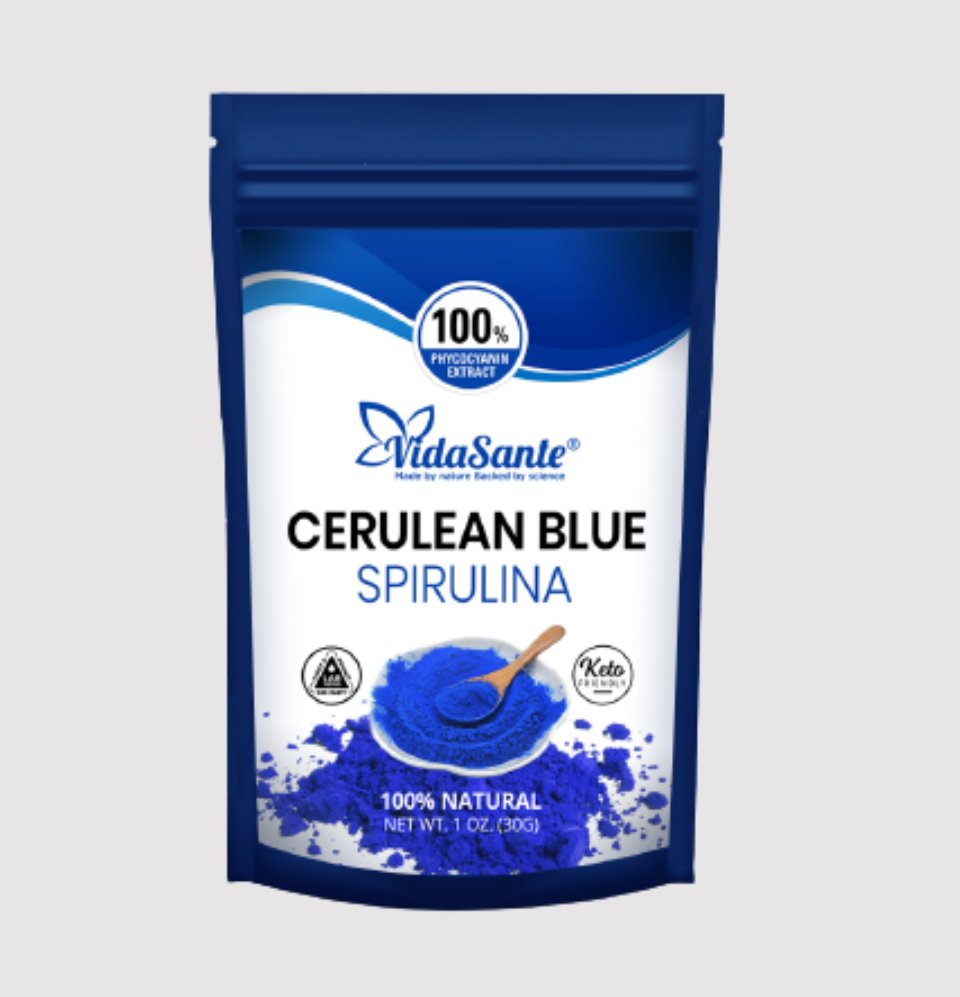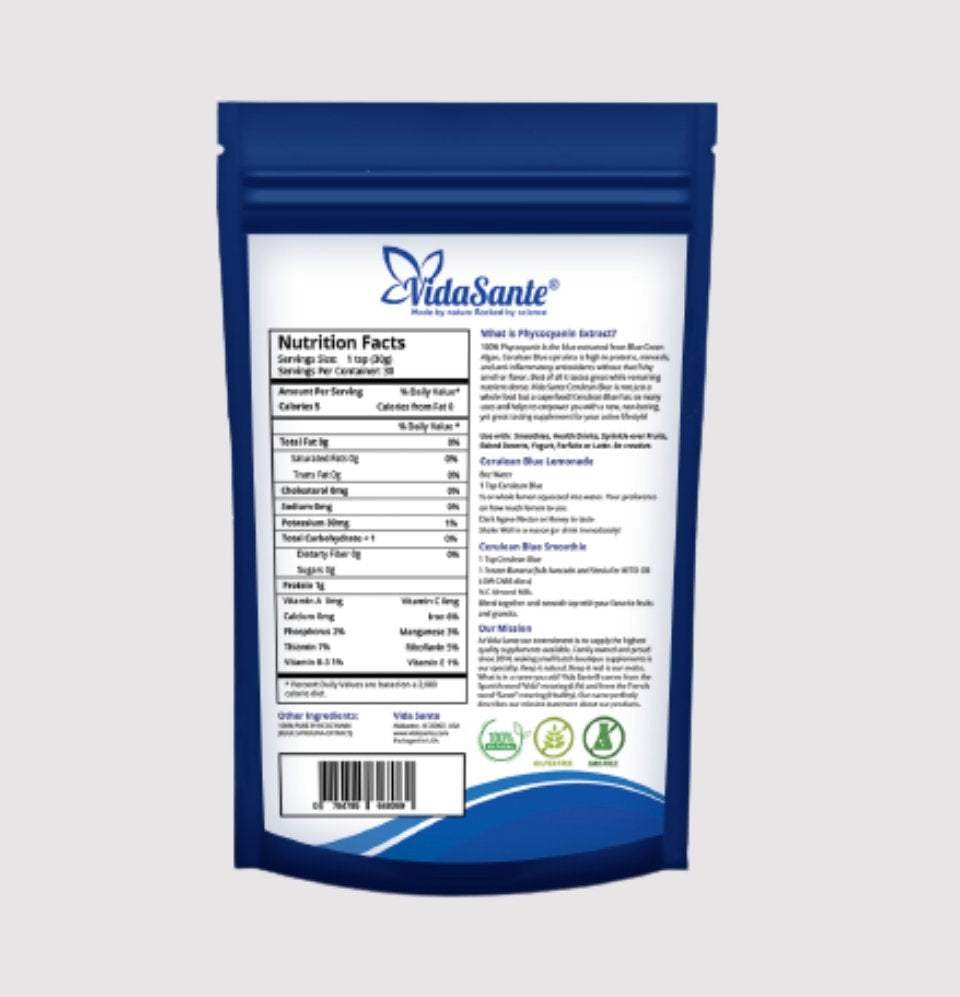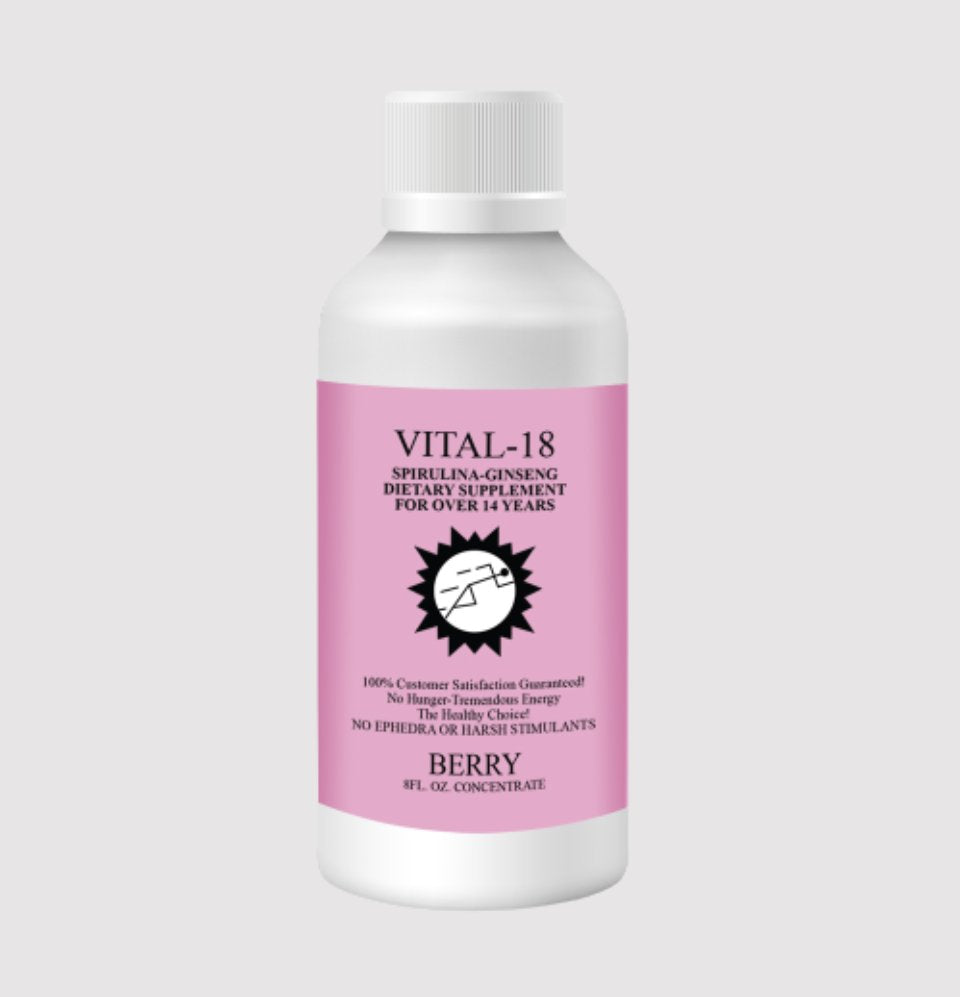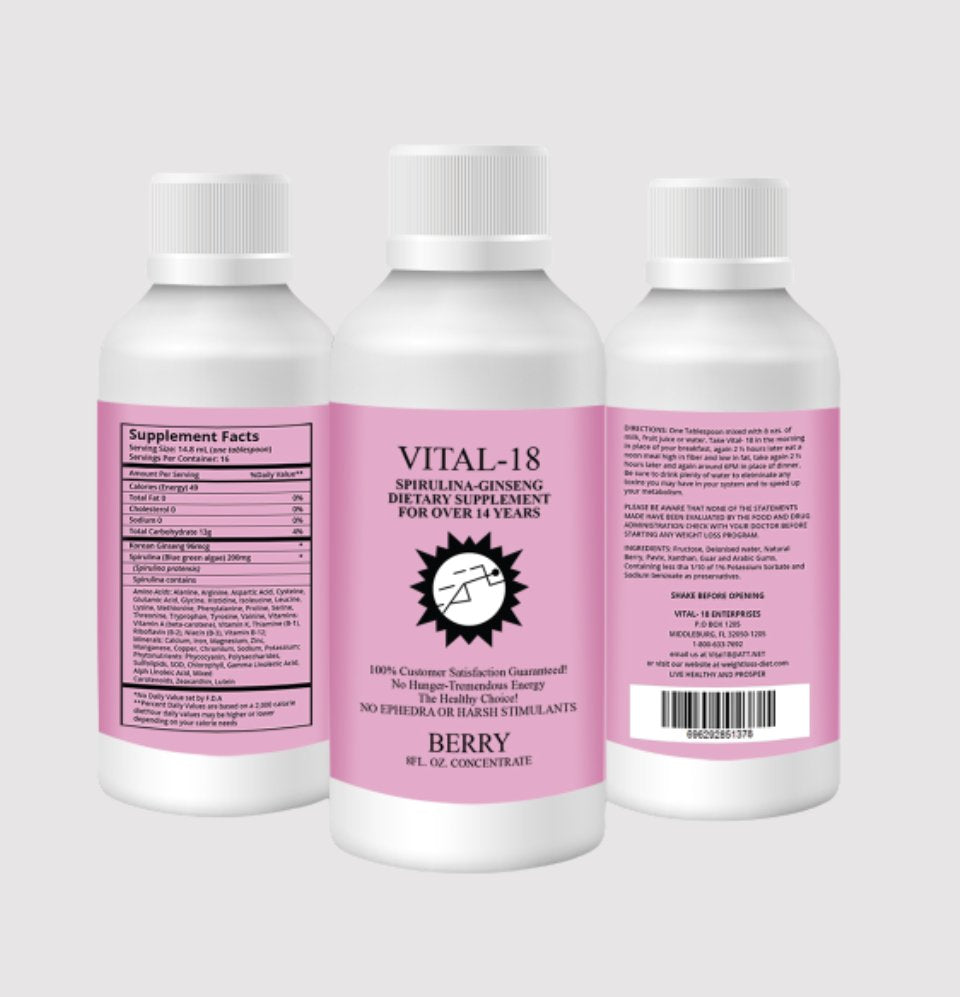Cerulean Blue is a type of spirulina with a higher phycocyanin content than normal giving it a deep blue color. Phycocyanin has been shown have several health benefits including antioxidant properties and the ability to support kidney and brain health.
Cerulean Blue Spirulina is a concentrated extract of a blue-colored pigment called phycocyanin, uniquely found in blue-green algae. Typically, blue-green algae grow in freshwater lakes, but many man-made reservoirs are now being built as an alternative.
Cerulean Blue Benefits
1) Highly Nutritious Superfood– Cerulean Blue Spirulina is rich in vitamins and minerals especially B-vitamins, copper, and iron as well as magnesium, potassium, and manganese.
2) High Phycocyanin Content – Our Blue Spirulina product is standardized to 35% phycocyanin making each serving provide over 350 mg of phycocyanin.
3) Made In The Usa - Cerulean Blue Spirulina is manufactured and tested for safety and purity right here in the USA.











